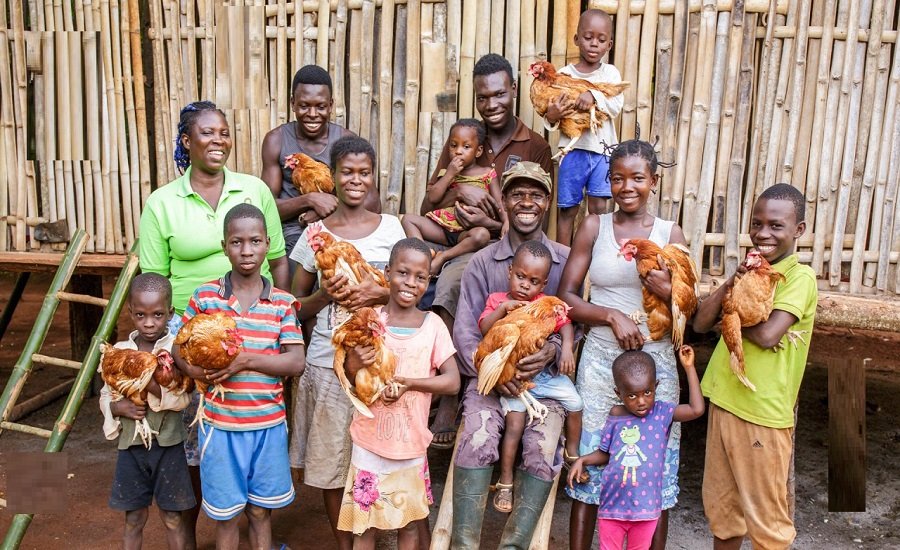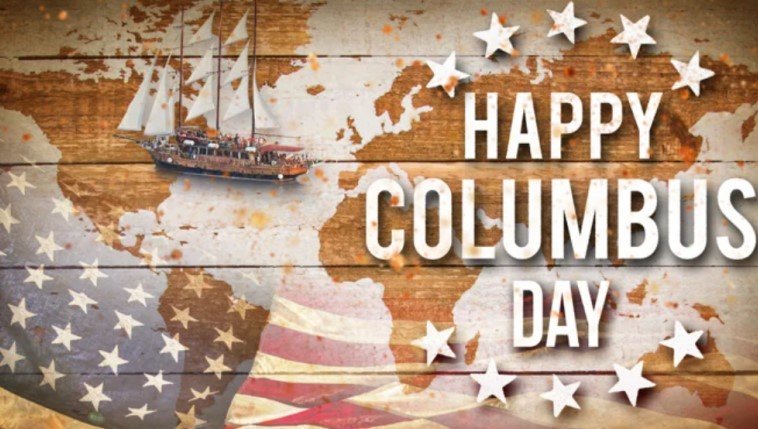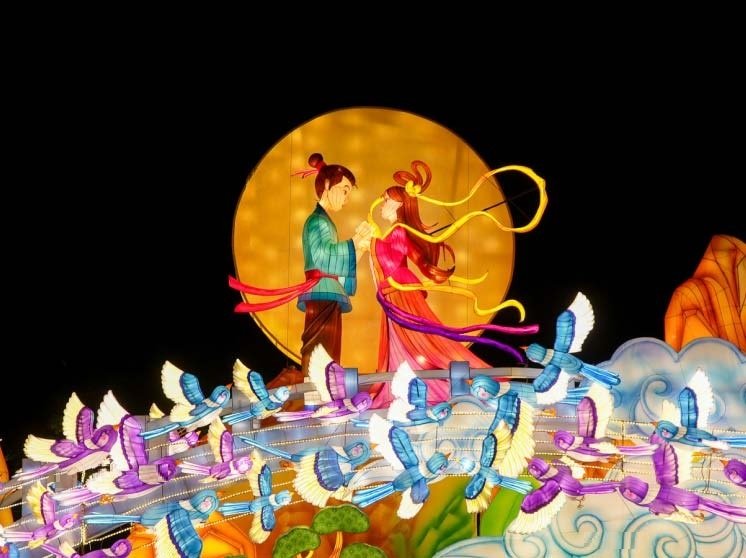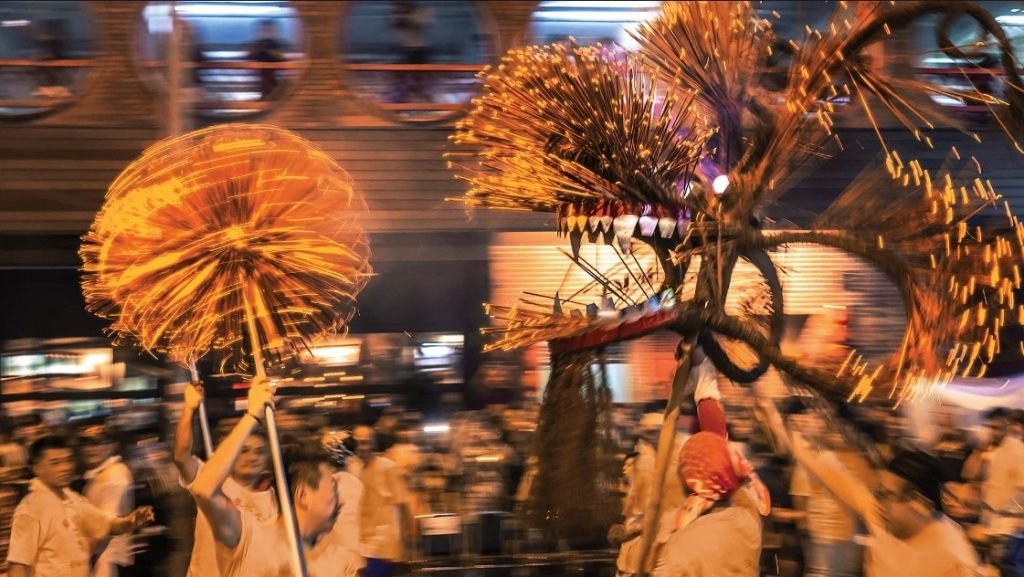Travel & Events
Celebrate International Day of Charity 2024 with Global Acts of Kindness

Celebrate International Day of Charity 2024 with Global Acts of Kindness
Global Generosity in 2024
In the world of global giving, the International Day of Charity shines as a symbol of hope and compassion. It brings people and organizations together from every corner of the globe, all united by a common goal: helping those in need. This special day reminds us just how powerful simple acts of kindness and generosity can be in transforming lives and communities facing tough challenges.
But the International Day of Charity is more than just a day on the calendar. It’s a chance to start important conversations about key issues like poverty, access to healthcare, education, and environmental sustainability. It’s an opportunity to raise awareness and rally support to tackle these pressing problems head-on.
When we come together to practice charity on a global scale, our efforts create ripples that reach far beyond immediate relief. By fostering a culture of kindness and support, we help build a more compassionate and connected world where everyone looks out for one another.
As we look ahead to 2025, let’s embrace this spirit of global generosity. Whether through small acts or larger initiatives, every bit of charity contributes to a brighter future for everyone.
International Day of Charity
The International Day of Charity, celebrated each year on September 5th, is all about honoring the incredible work of people and organizations committed to making a difference in others’ lives. It’s a day dedicated to fostering a spirit of giving and compassion, encouraging acts of kindness that reach across borders and cultures. This day reminds us that no matter where we are in the world, our efforts to help others can create a ripple effect of goodwill and solidarity.
Origins and Purpose
The roots of the International Day of Charity can be traced back to the philanthropic legacy of Mother Teresa, whose tireless work in alleviating poverty and suffering inspired the United Nations to designate September 5th as a day to honor charitable actions worldwide. The primary objective of this day is to raise awareness about the importance of charity in addressing social challenges and promoting sustainable development.
Through various initiatives and campaigns, the International Day of Charity aims to mobilize resources, encourage volunteerism, and advocate for policies that support vulnerable populations. By highlighting the transformative power of generosity, this day underscores the role each individual can play in creating positive change within their communities.
Global Impact of Charity
When charity takes on a global scale, it can truly change lives and communities, making a difference that goes well beyond borders. The International Day of Charity highlights how powerful our acts of kindness can be in tackling important social issues and building a world where empathy and support thrive. It’s a reminder of how our collective efforts can spark positive change and create a lasting impact everywhere.

Honoring Mother Teresa of Calcutta
Mother Teresa, celebrated for her deep commitment to helping the poor and marginalized in Calcutta, truly embodies the spirit of selflessness and compassion. Her work continues to motivate people around the world to act with kindness and generosity, making September 5th, the International Day of Charity, all the more meaningful. Through her relentless dedication to alleviating suffering and poverty, Mother Teresa set a powerful example of humanitarianism that resonates across generations and inspires individuals from all walks of life.
UN’s Recognition and Encouragement
The United Nations General Assembly’s decision to designate September 5 as the International Day of Charity signifies a global commitment to promoting philanthropy and social responsibility on an international scale. Member States and organizations around the world actively participate in this day by organizing diverse activities such as charity concerts, fundraisers, educational campaigns, and community service projects. These initiatives not only raise awareness about critical issues but also mobilize resources to support those in need.
Events held globally in commemoration of the International Day of Charity serve as platforms for advocacy, fundraising, and volunteer engagement. From special programs and exhibitions to donations and outreach efforts, these activities highlight the collective effort towards building a more compassionate and equitable world through charitable endeavors.
Sowing Seeds of Compassion for a Better Tomorrow
As we commemorate the International Day of Charity in 2024, it is essential to reflect on the profound impact that global acts of kindness have in shaping a brighter future for all. The ripple effects of charitable initiatives extend far beyond immediate assistance, laying the foundation for stronger, more resilient communities.
Continued support for charitable endeavors is crucial in addressing complex social challenges and fostering a culture of compassion and generosity. By advocating for causes that promote equity, justice, and sustainability, individuals can actively contribute to positive change on both local and global scales.
Let us be inspired by the spirit of giving and empathy that defines the International Day of Charity. Each act of kindness, no matter how small, has the potential to sow seeds of compassion that will flourish into a world where solidarity and social responsibility are at the forefront of our collective consciousness. Together, we can make a difference and create a better tomorrow for generations to come.
FAQ: International Day of Charity
1. What is the International Day of Charity?
The International Day of Charity, observed annually on September 5th, is a global event dedicated to honoring and promoting acts of kindness and generosity. It highlights the importance of charitable efforts in addressing social issues and fostering a culture of empathy and support.
2. Why is September 5th chosen as the date for the International Day of Charity?
September 5th was chosen to commemorate the anniversary of Mother Teresa’s passing. Her life and work as a humanitarian and advocate for the poor serve as an inspiration for global acts of charity and kindness.
3. What is the significance of the International Day of Charity?
The day serves as a reminder of the impact that charitable actions can have on communities and individuals worldwide. It promotes the idea that acts of charity can make a significant difference in addressing issues like poverty, health care, and education, and encourages people to contribute to these causes.
4. How can individuals participate in the International Day of Charity?
Individuals can participate by engaging in acts of kindness, volunteering their time, or donating to charitable organizations. It’s also a great opportunity to spread awareness about important social issues and encourage others to get involved.
5. How do charitable organizations benefit from the International Day of Charity?
Charitable organizations benefit from increased visibility and support as the day brings attention to their causes. It provides a platform for raising awareness, mobilizing resources, and encouraging people to contribute to their missions.
6. Are there any special events or activities organized for the International Day of Charity?
Many organizations and communities host events, fundraisers, and volunteer activities to mark the occasion. These events can range from local community service projects to large-scale fundraising campaigns.
7. What impact does the International Day of Charity aim to achieve?
The day aims to create a ripple effect of generosity and compassion, inspiring individuals and organizations to take action and contribute to positive change. By highlighting the importance of charity, it seeks to address pressing social issues and build a more empathetic and supportive society.
8. How can I learn more about the International Day of Charity and get involved?
You can learn more by visiting the official websites of charitable organizations, following social media campaigns related to the day, and checking local community boards for events. Engaging with these resources can help you find ways to participate and contribute.
9. Can businesses participate in the International Day of Charity?
Absolutely! Businesses can get involved by organizing charity events, matching employee donations, or supporting local and global causes. Their participation can amplify the impact of charitable efforts and inspire others to contribute.
10. How does the International Day of Charity influence global philanthropy?
The day highlights the importance of charitable giving and encourages a global culture of empathy and support. By bringing attention to social issues and showcasing the impact of charity, it fosters a collective commitment to making the world a better place.
Travel & Events
Warped Tour 2025: Festival Grounds at RFK Campus

The Warped Tour has been a staple in the music festival scene since its inception. Over the years, it has grossed an impressive $367.2 million and sold approximately 10.6 million tickets. As you gear up for the Warped Tour 2025, you can feel the excitement in the air. This year marks the 30th anniversary, a significant milestone that promises to bring together legendary artists and fresh talent. With events planned in Washington, D.C., Long Beach, and Orlando, the anticipation is palpable. You won’t want to miss this celebration of music and culture.
Warped Tour 2025 Event Details

Cities and Dates
Get ready to mark your calendars! The Warped Tour 2025 is making its grand return with events in three vibrant cities. You can catch the action in:
- Washington, D.C.
- Long Beach, California
- Orlando, Florida
Each city will host the festival over two exciting days. Here’s the schedule you need to know:
- Washington, D.C.: June 14-15
- Long Beach, California: July 26-27
- Orlando, Florida: November 15-16
These dates promise a summer filled with unforgettable music experiences. Make sure you plan your trip accordingly to join the celebration.
Number of Bands
The Warped Tour 2025 lineup is set to be massive! You can expect between 70 to 100 bands at each stop. This impressive number ensures a diverse mix of both established and emerging artists. It’s a chance for you to discover new favorites and enjoy performances from bands you already love.
In comparison to previous years, the 2025 tour aims to surpass expectations. Past tours have featured around 50 to 60 bands, but this year, the organizers are pulling out all the stops. The 30th anniversary promises to be bigger and better, offering you more music and more memories.
Stay tuned for the official lineup announcement in March. You won’t want to miss the chance to see which bands will take the stage at the Warped Tour 2025.
Warped Tour 2025 Anticipated Lineup
Notable Past Acts
Warped Tour has always been a platform for some of the most iconic bands in the music scene. Over the years, you’ve seen legendary performances that have left a lasting impact. Bands like Blink-182, Fall Out Boy, and Paramore have graced the stage, creating unforgettable memories.
Highlight of past performers
These bands didn’t just perform; they set the stage on fire. We The Kings delivered one of the best sets, with lead singer Travis expressing heartfelt gratitude to his bandmates, the crowd, and Kevin Lyman. You could feel the energy and passion in every note.
“Hands down it was one of the best sets of the day.”
Influence on the music scene
The influence of these acts extends beyond their performances. They have shaped the music scene, inspiring countless artists and fans alike. Andrew Oross, a devoted attendee, described the experience as:
“Very exciting and definitely brings a lot of people together in a way to express themselves with their type of music.”
Potential Performers for 2025
As you look forward to Warped Tour 2025, the buzz around potential performers is electrifying. While the official lineup remains under wraps, rumors are swirling about who might take the stage.
Rumored bands and artists
Speculation is part of the fun! You might hear whispers about bands like Doll Skin and Silent Planet making an appearance. These bands have left a mark with their previous performances. Fans rave about their energy and connection with the audience.
Doll Skin: “The ladies of Doll Skin are without a doubt some of the sweetest and most down to earth people I’ve met.”
Silent Planet: “If you haven’t seen Silent Planet, I highly suggest you do so.”
Fan expectations and excitement
The anticipation is building, and you can feel the excitement in the air. Fans are eagerly waiting to see if their favorite bands will be part of this monumental event. The 30th anniversary promises surprises and unique twists that will make Warped Tour 2025 an unforgettable experience. Get ready to be part of something special!
Ticket Information
Presale Process
How to access presale tickets
Getting your hands on presale tickets for the Warped Tour 2025 is a breeze. Mark your calendar for October 24th, when presales kick off at 12 p.m. ET/9 a.m. PT. Head over to the official Vans Warped Tour website to secure your spot. Keep an eye on their social media channels for any updates or changes. This way, you won’t miss out on the chance to grab your tickets before they sell out.
Benefits of purchasing presale tickets
Why should you consider presale tickets? They offer several perks. First, you get early access, ensuring you don’t miss out on this epic event. Presale tickets often come with exclusive offers or packages, adding more value to your purchase. Plus, buying early means you can plan your trip and accommodations well in advance, reducing last-minute stress. It’s a win-win situation!
Pricing Details
Breakdown of ticket prices
Let’s talk numbers. The Warped Tour 2025 offers full weekend passes starting at an all-inclusive price of $149.98. This breaks down to a $119.99 ticket price plus $29.99 in fees. This pricing structure ensures transparency, so you know exactly what you’re paying for. It’s a fair deal for two days packed with incredible music and unforgettable experiences.
Comparison with previous years
How does this year’s pricing stack up against previous years? The Warped Tour has always prioritized accessible pricing, and 2025 is no different. Compared to other festivals like When We Were Young, which charges $325, the Warped Tour remains a budget-friendly option. This commitment to affordability allows more fans to join in the celebration, making it a must-attend event for music lovers everywhere.
The Warped Tour 2025 is shaping up to be an unforgettable event. Celebrating its 30th anniversary, this festival promises a unique blend of legendary acts and fresh talent. You can feel the excitement building as fans eagerly await the lineup announcement. Stay tuned for updates and make sure you’re ready for ticket sales. Mark your calendar for presale dates and secure your spot at this iconic music festival. Don’t miss out on the chance to be part of this historic celebration. Get ready to rock and roll!
Travel & Events
Columbus Day 2024 Observance Controversy

Columbus Day, celebrated on the second Monday of October, marks Christopher Columbus’ arrival in the Americas in 1492. For 2024, this federal holiday falls on October 14. Traditionally, Columbus Day has been viewed as a celebration of exploration, particularly within Italian-American communities, due to Columbus’ Italian heritage. However, in recent years, this holiday has become increasingly controversial, prompting debates about its historical significance and ethical implications.
Columbus Day 2024: Evolving Traditions and Controversies
In the last few decades, Columbus Day has faced growing opposition due to the colonialism, enslavement, and devastation brought upon Indigenous populations following Columbus’ arrival. As a result, Indigenous Peoples’ Day has emerged as an alternative observance, focusing on the resilience and contributions of Native American communities. Several U.S. cities, states, and educational institutions have embraced this alternative, either alongside or in place of Columbus Day.
As of 2024, 17 states and over 100 cities officially recognize Indigenous Peoples’ Day, signaling a growing nationwide movement to honor Indigenous cultures and histories. The Biden administration has issued proclamations recognizing Indigenous Peoples’ Day since 2021, although it is not yet a federal holiday.
The Historical Background of Columbus Day
Columbus Day was first proclaimed as a national holiday in 1937 under President Franklin D. Roosevelt. The Knights of Columbus, an influential Catholic fraternal organization, played a significant role in promoting this holiday as a way to recognize the achievements of Italian immigrants in the U.S. Since 1971, the holiday has been observed on the second Monday of October, giving it a permanent place on the federal calendar.
However, Columbus’ legacy is far from universally celebrated. The explorer is often criticized for his role in the violent conquest of Indigenous lands, the initiation of transatlantic slavery, and the decimation of Native populations through disease and exploitation. These historical realities have contributed to the movement to reframe the narrative surrounding Columbus’ arrival.
Trending Searches: Columbus Day vs. Indigenous Peoples’ Day
As the holiday approaches in 2024, popular search queries reflect the ongoing public debate. Some of the most searched topics include:
- What is open or closed on Columbus Day 2024?
People are curious about which businesses, banks, and government offices are affected by the holiday. Federal offices and the USPS are closed, while most retail businesses remain open. - Why is Columbus Day controversial?
Many are searching for details about the criticisms of Columbus Day, particularly its connection to colonial violence and the marginalization of Native Americans. - What is Indigenous Peoples’ Day?
A rising interest in understanding this alternative holiday has prompted questions about its history, significance, and how it’s celebrated. - How is Columbus Day celebrated in Italian-American communities?
Italian-American pride remains a significant aspect of Columbus Day, with parades and cultural festivals held in cities like New York and Chicago. - Which states have replaced Columbus Day with Indigenous Peoples’ Day?
Growing interest surrounds the states and cities that have officially recognized Indigenous Peoples’ Day over Columbus Day.
Columbus Day Celebrations and Cultural Significance
Despite the controversy, Columbus Day remains an important holiday for many Italian-Americans, who view it as a celebration of their heritage. Across the country, parades, street fairs, and cultural events are held to honor Columbus’ voyage and the contributions of Italian immigrants. These celebrations often feature Italian cuisine, music, and performances, offering a positive reflection on the immigrant experience in the U.S.
However, Indigenous Peoples’ Day celebrations also spotlight Native American culture and history. In cities and regions that observe this holiday, events such as traditional dance performances, art exhibitions, and educational workshops highlight the achievements and resilience of Indigenous communities.
The Future of Columbus Day
The debate over Columbus Day versus Indigenous Peoples’ Day is unlikely to resolve anytime soon. As more states and cities adopt Indigenous Peoples’ Day, the holiday’s future remains a topic of national conversation. The movement to replace Columbus Day reflects broader societal shifts toward inclusivity and reexamining historical figures through a modern lens.
FAQs
What is the date of Columbus Day 2024?
Columbus Day will be observed on October 14, 2024.
Why is Columbus Day controversial?
Columbus Day has become controversial due to its association with the colonization of Indigenous lands, the introduction of slavery, and the devastating impact on Native populations.
Which states recognize Indigenous Peoples’ Day instead of Columbus Day?
Seventeen states, including California, Oregon, and New Mexico, officially recognize Indigenous Peoples’ Day as a state holiday.
Is Indigenous Peoples’ Day a federal holiday?
While President Biden has issued proclamations recognizing Indigenous Peoples’ Day since 2021, it is not currently a federal holiday.
How is Columbus Day celebrated?
Italian-American communities celebrate Columbus Day with parades, cultural events, and festivals, particularly in cities like New York and San Francisco.
What is the future of Columbus Day?
The future of Columbus Day is uncertain, as the movement to replace it with Indigenous Peoples’ Day continues to gain momentum across the U.S.
Travel & Events
Mid-Autumn Festival 2024: Date, Traditions, and Celebrations

Mid-Autumn Festival, Moon Festival, or Mooncake Festival: This is one of the most celebrated holidays all across East Asia in general, with principal festivities shared by China, Taiwan, Vietnam, Singapore, and Malaysia. This is a sign, literally on the 15th day of the 8th month in the lunar calendar; it means that the moon falls on that period in its fullest and brightest form, a symbol for unity, harmony, and prosperity. Typically this is a time when families come together to eat and view the beauty of the full moon.
The history, mythology, and traditions behind the Mid-Autumn Festival have been expounded upon in this post.
-

 Health And Fitness8 months ago
Health And Fitness8 months agoPepsi Zero Sugar vs Diet Pepsi: Which Is Healthier?
-

 Health And Fitness7 months ago
Health And Fitness7 months agoHow to Choose a Rehab for Lasting Recovery
-

 News8 months ago
News8 months agoKolkata Doctor Case: Tragic Story of Dr. Moumita Debnath
-

 News8 months ago
News8 months agoLondon King Opens Up About Her Relationship with Rob Schneider
-

 Tech Innovation7 months ago
Tech Innovation7 months agoHuawei Mate XT: A Detailed Review of the World’s First Tri-Fold Smartphone
-

 News8 months ago
News8 months agoSunita Williams’ Space Dilemma: Never Alone, Always Brave
-

 Sports6 months ago
Sports6 months agoChicago Marathon 2024 Results
-

 Business8 months ago
Business8 months agoTop Payroll Services for Small Businesses in 2024


